
analogue and digital figurative art full of imagination

analogue and digital figurative art full of imagination
vulnerability

The beauty and fragility of the fungi, the short-lived often group wise appearances in the autumn in an environment of decay, are an annually recurring metaphor for humans on earth. Mushrooms have a head and body and they are the visible fruits of life underground or in dead trees. The life of asparagus and carrots also takes place largely underground and only shows the beauty after they have been dug out.
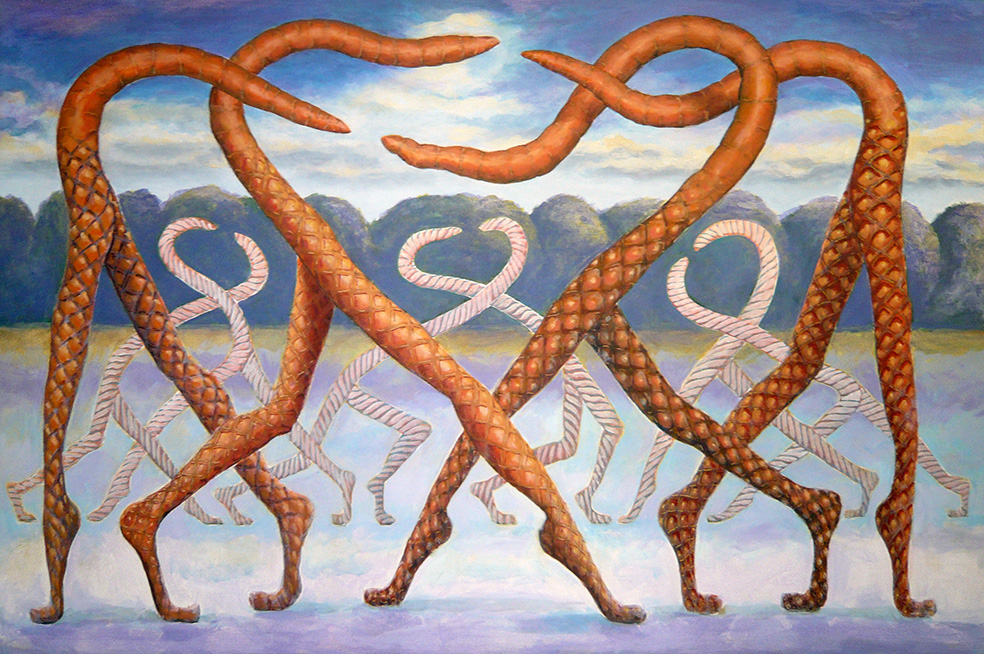
Relationships and fragility, depicted in the dance steps that depict a fight or love, that repel or attract.


Asparagus, the pinnacle of fragility. The artist can make them flexible and agile, but they remain vulnerable in their nakedness. These white individuals, unable to manifest as loners, have managed to bring themselves to the foreground by squirming and writhing, while the black, interlinked upright in ranks, are still waiting in the background.

Many animal organisms (fauna) have developed ways to move, over land, in water or through the air. The world of plants (flora) and fungi or funga, to which the mushrooms belong, is considerably more passive. Plants and mushrooms rarely have tools at their disposal to actively promote survival. Do we have legs to run away, teeth and hands for defense, plants and mushrooms are lost. Trees often survive because of their sturdiness, mushrooms because they are often hidden under the ground and because the fruits are deterrent because of color, stench and poisons.
Why aren’t there any trees walking around? Why does one plant die when it is deprived of light by a another larger plant that sprouts right next to it, and why can’t it step aside?
That is the miracle of evolution characterized by its inescapability and at the same time the idea that it could have turned out differently, both in appearance and in personality.
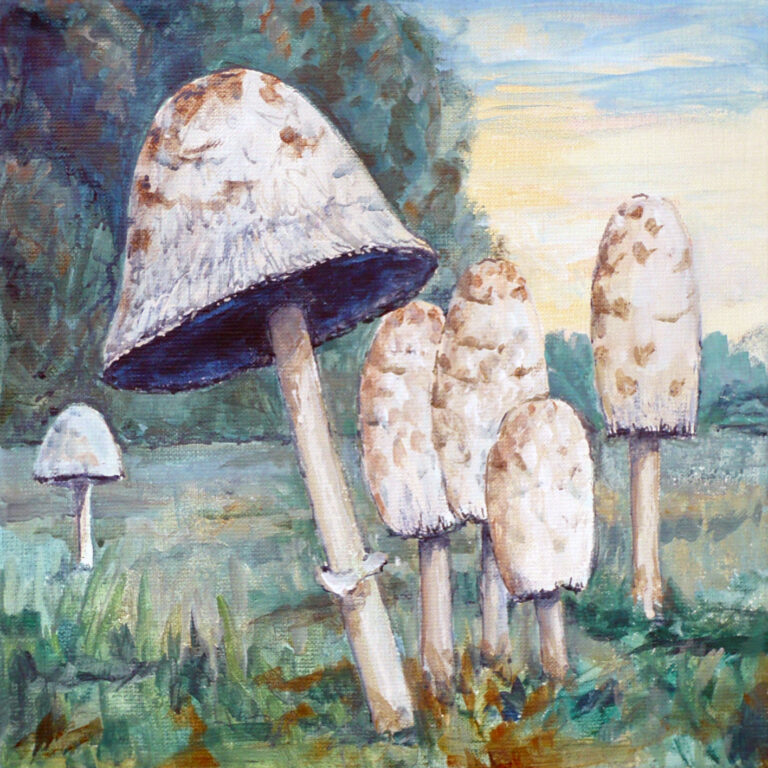

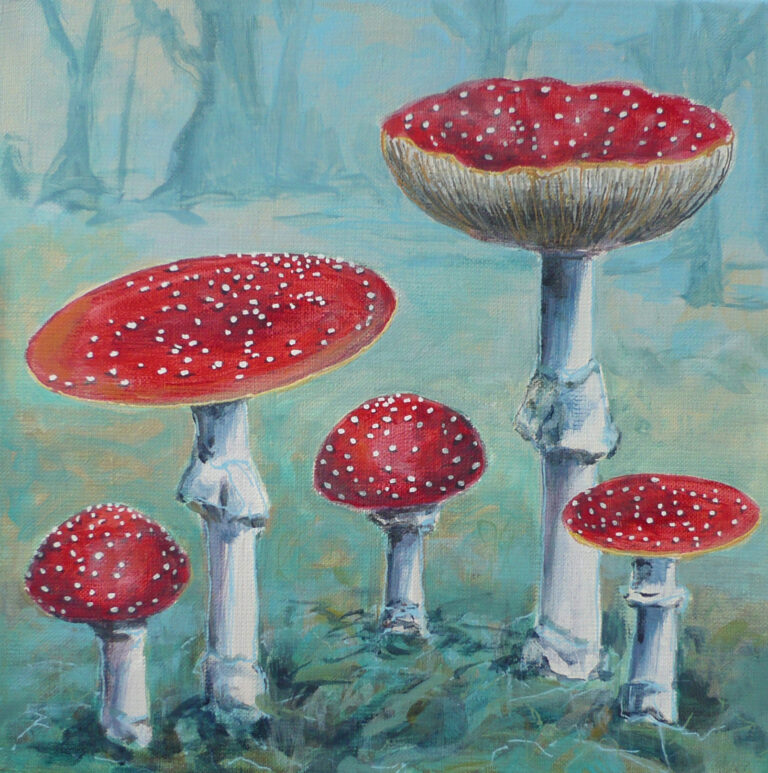
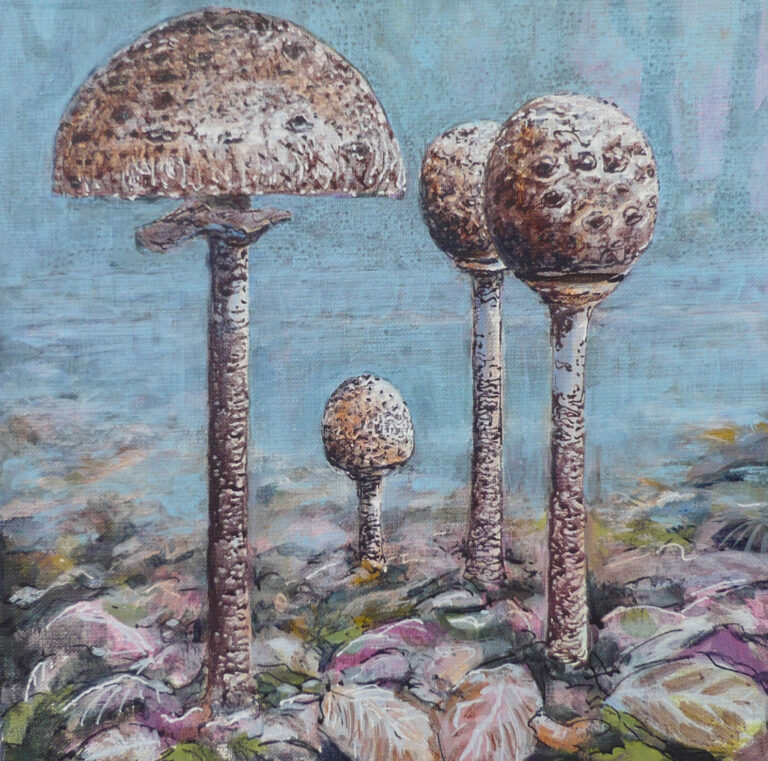
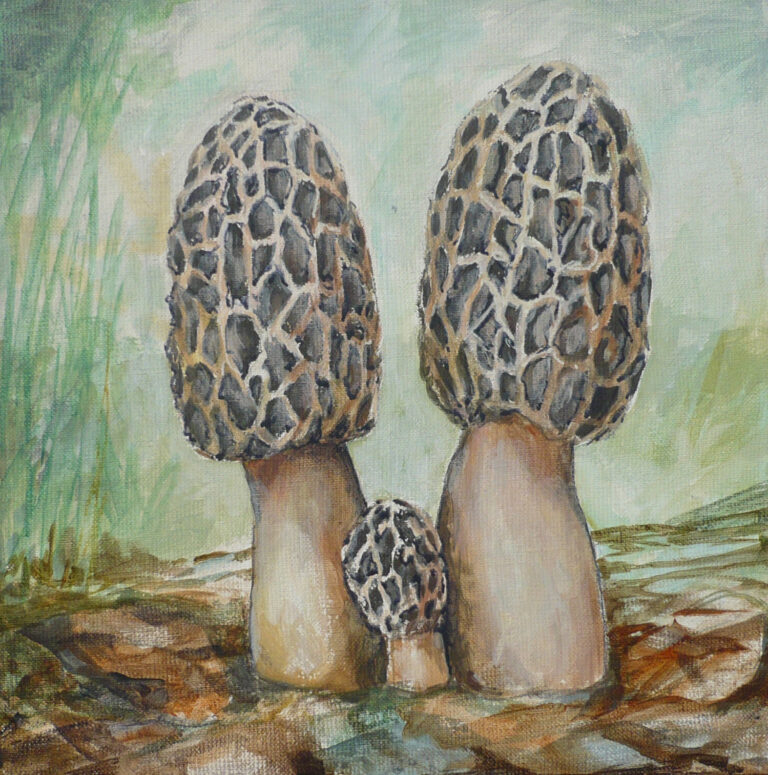
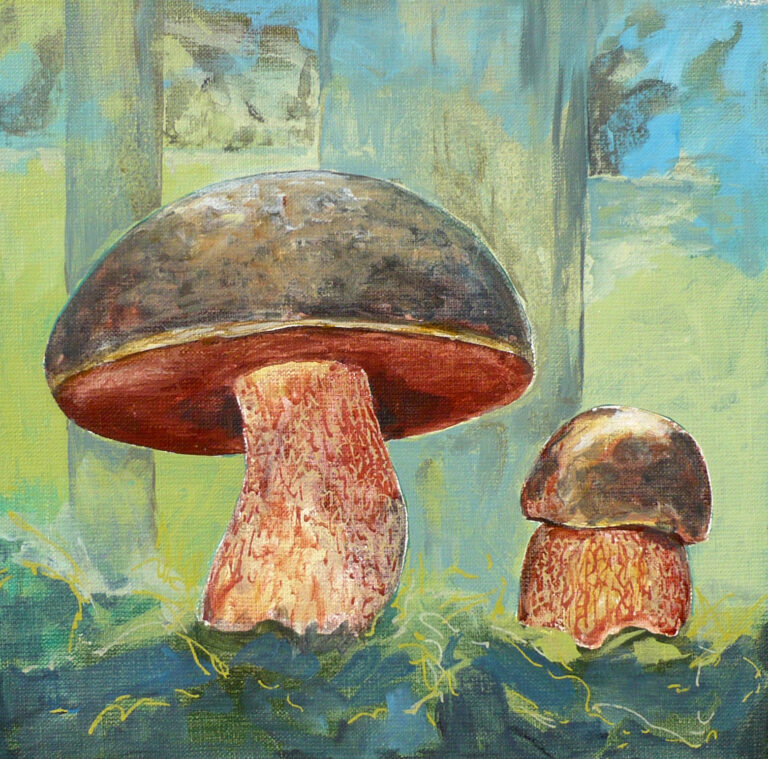
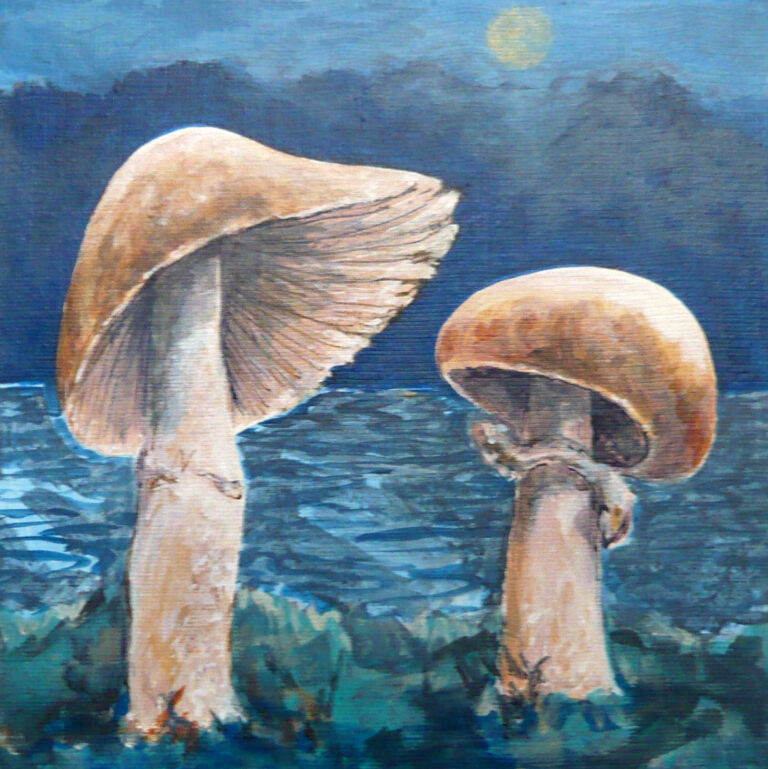
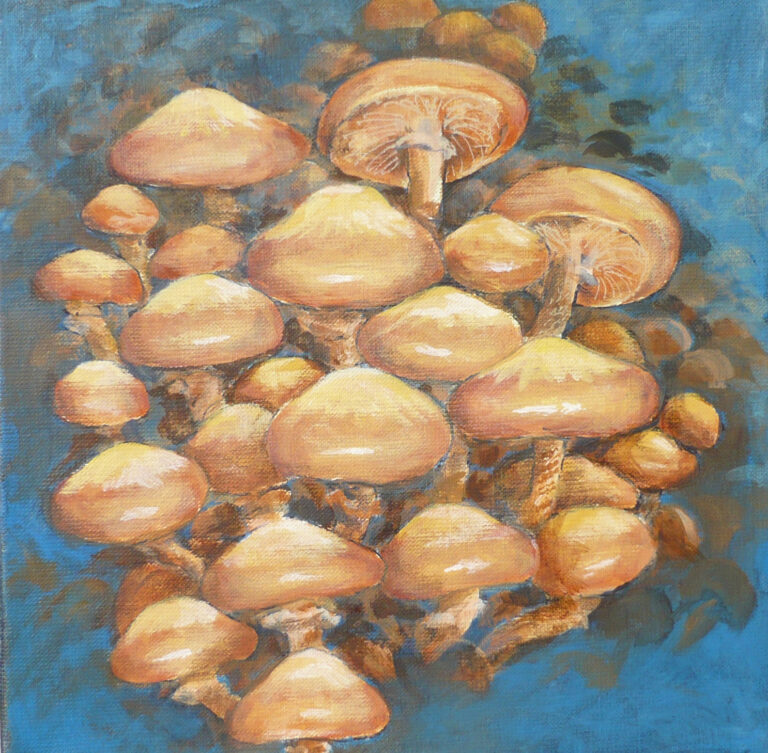
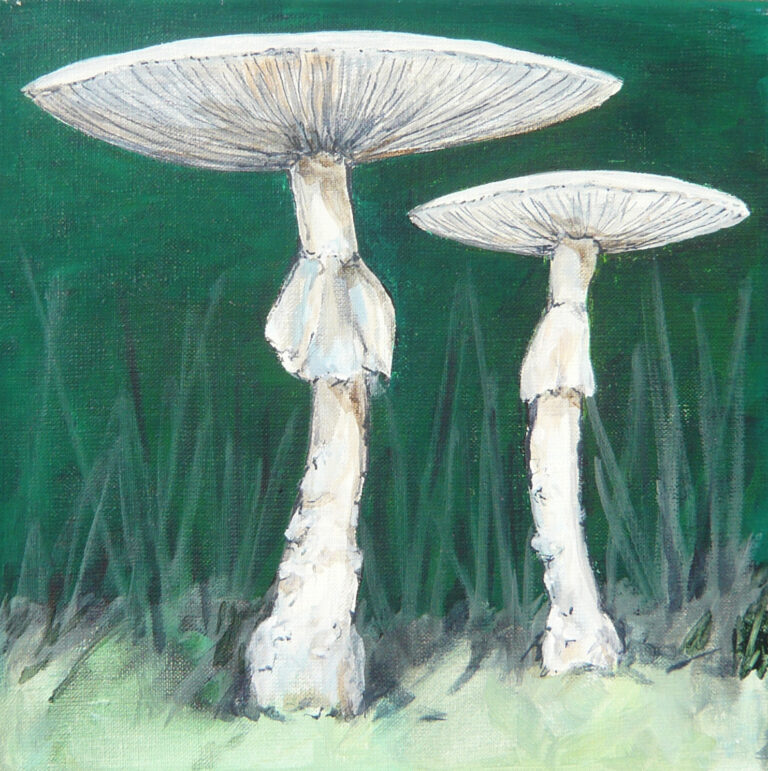

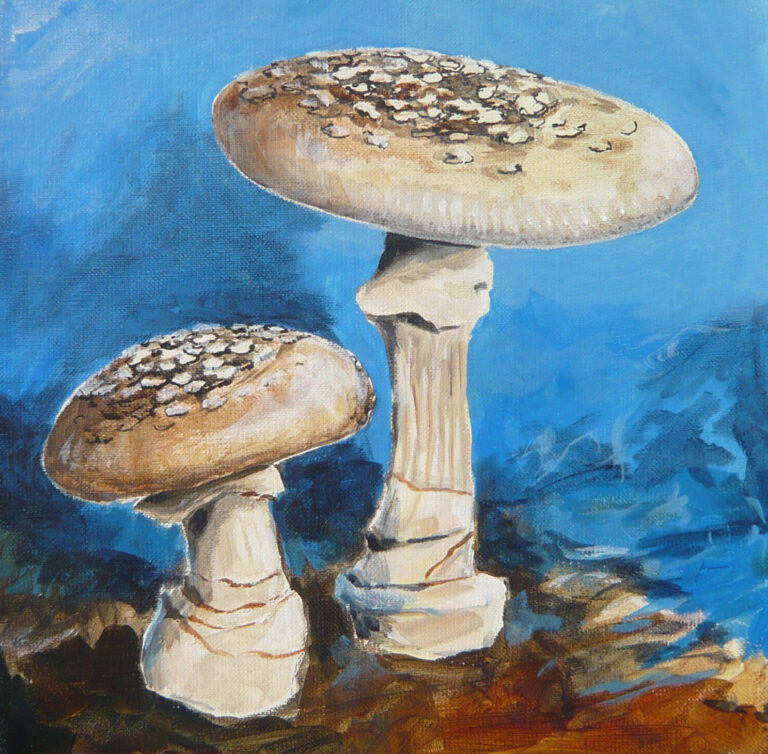
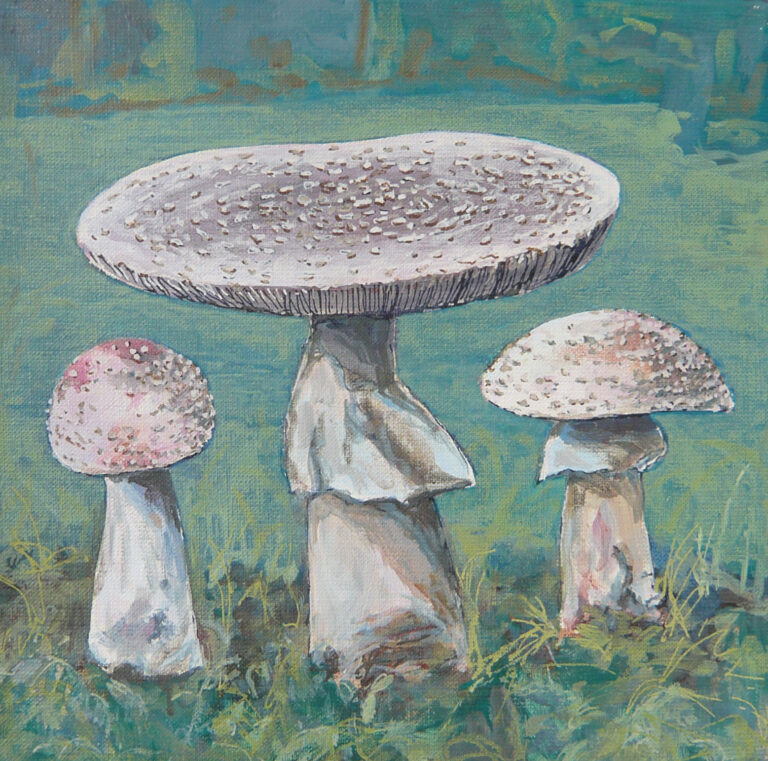
volatility
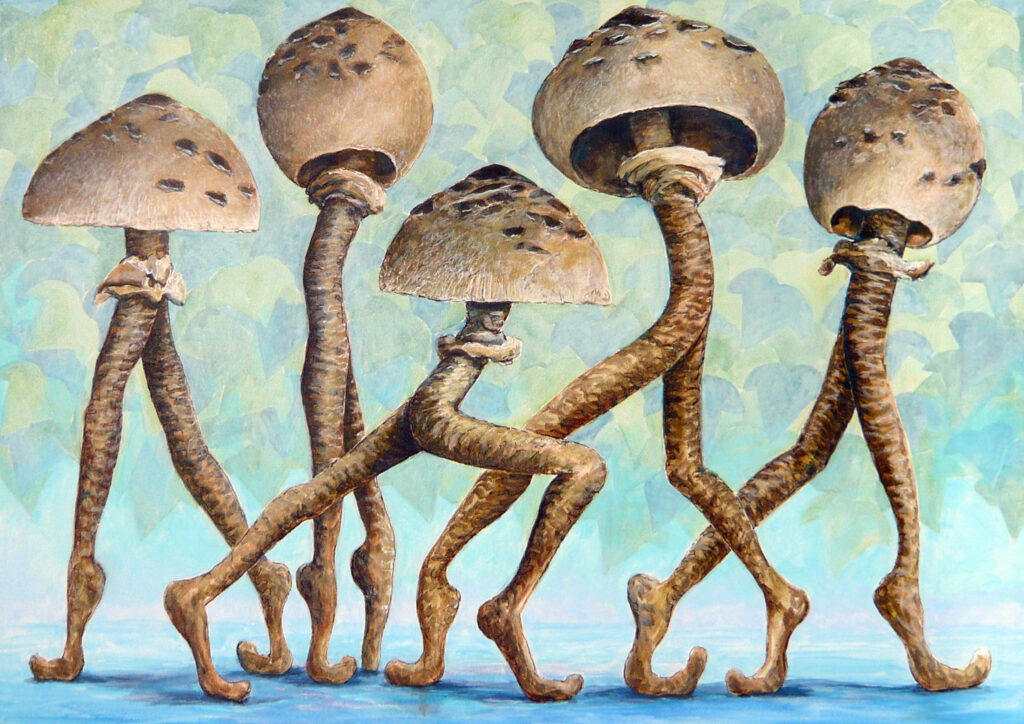
Often you don’t notice them and that’s why you almost never see them, but sometimes they spring up like mushrooms.
We tend to attribute traits to animals and even plants, viruses or fungi that we label as human. Mushrooms often occur in groups, whereby we do not see them as the fruits of one organism, but as a group of individuals who are cozy together. We imagine that they are chatting without knowledge or that they are chatting irrationally (in Dutch: zwammen = talking rubbish). They are “zwammen” after all (zwammen is a Dutch word meaning “fungi”). We attribute a mythical role to them because we sometimes find them in fairy circles and because they pop up in dark forests where wizards, goblins, and trolls are roaming.
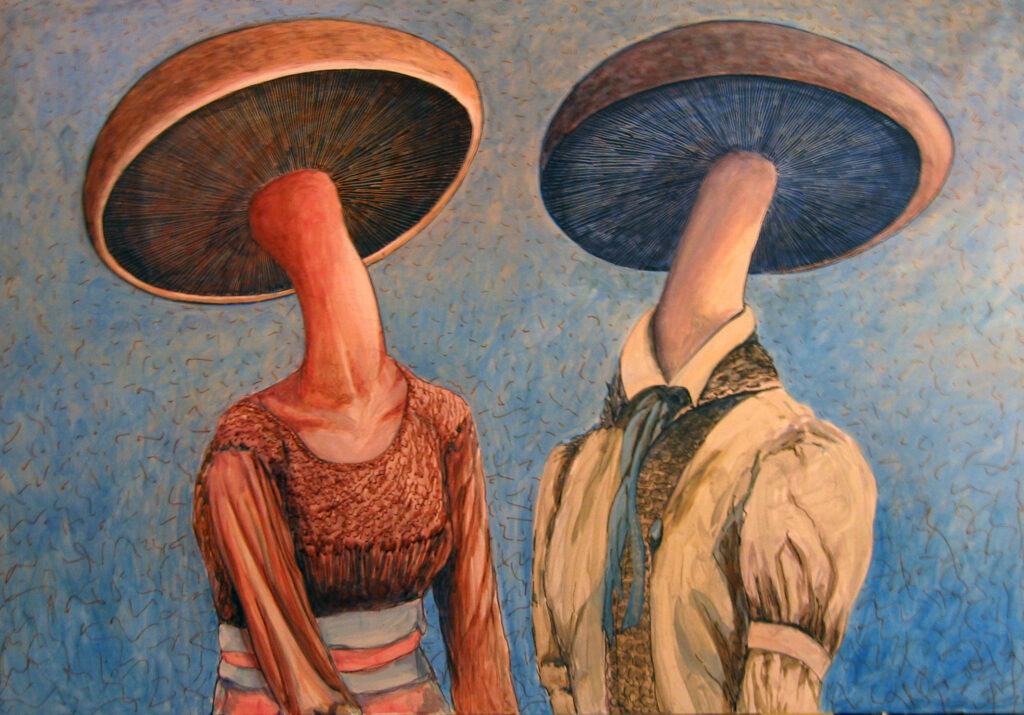
Mushrooms in the Netherlands seem to have a preference for autumn, the time of decay, which gives them a gloomy melancholy image, although they can appear beautiful and sweet and tasty. They can be tempting because of their warm full flavour, such as the porcini mushrooms or the mysterious truffle. They can impress with their stately posture, with the velvety textures or with their beautiful appearance with soft to bright autumn tones. They can be unexpectedly deadly due to their venom coupled with a deceptive appearance. They can exert hallucinogenic effects when consumed, ranging from pleasantly enlightening to gruesome and terrifying.
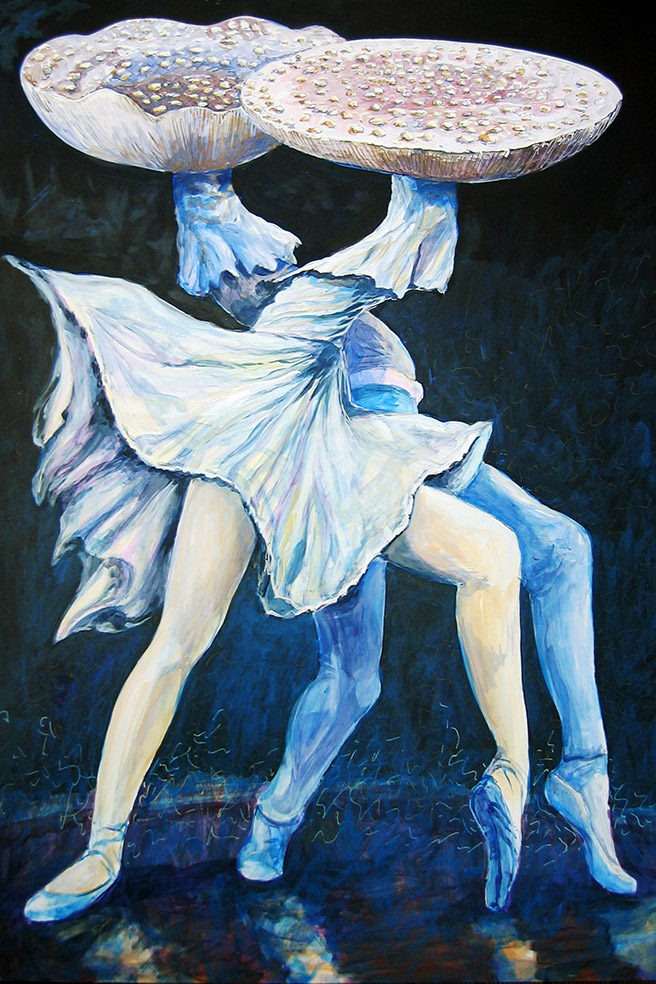
Dance is ephemeral elegance, graceful volatility and fragility.
where has the time gone?
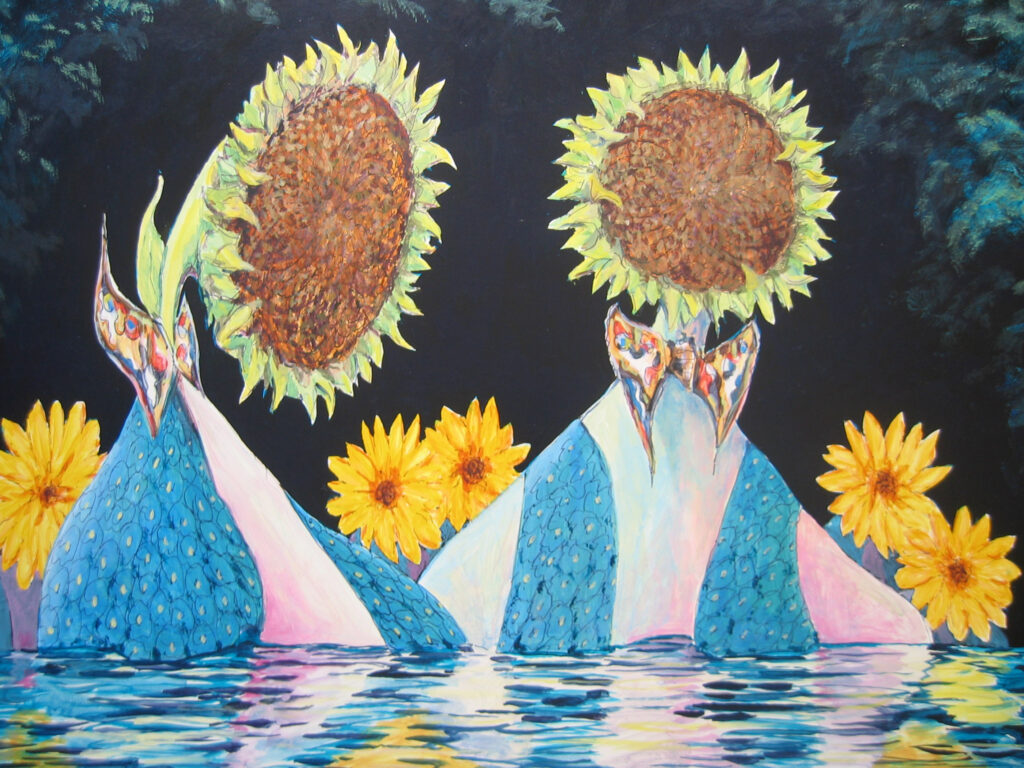
At first glance it seems like a pleasant summer get-together of the Sunflower family, but the irony is superimposed. As soon as flowers are put in the water, their last hour has come, then the wilting starts, the stems suffer from slimy putrefaction processes under water and the yellow flowers suddenly look dazed. The inky black background is the future that waits irrevocably.
It concerns flowers with a human build, which must mean that after a short bloom, the water rises to the lips of mankind and that we will have a bad time like the standard flowers of the florist. This temporality of both the individual and humanity on this earth is to laugh and to cry.
temporality
As a child, infinity was preached to me. At school and in church life was said to be a preparation for the afterlife and as a consequence of this the necessity of good conduct, neatness and diligence was emphasized in the domestic circle in order to avoid purgatory and certainly hell. From the moment that balloon bursts, you have to learn to deal with temporality and impermanence.
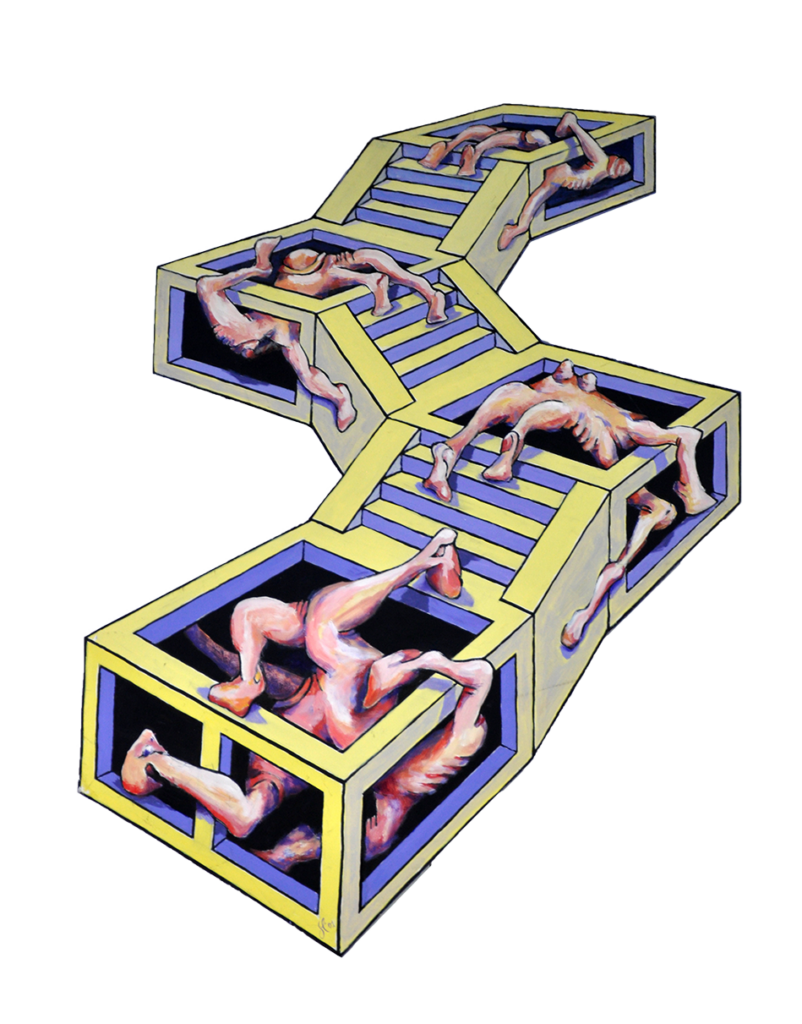
The road to salvation full of steps and pitfalls (acrylic paint on jigsawn MDF, 2001)
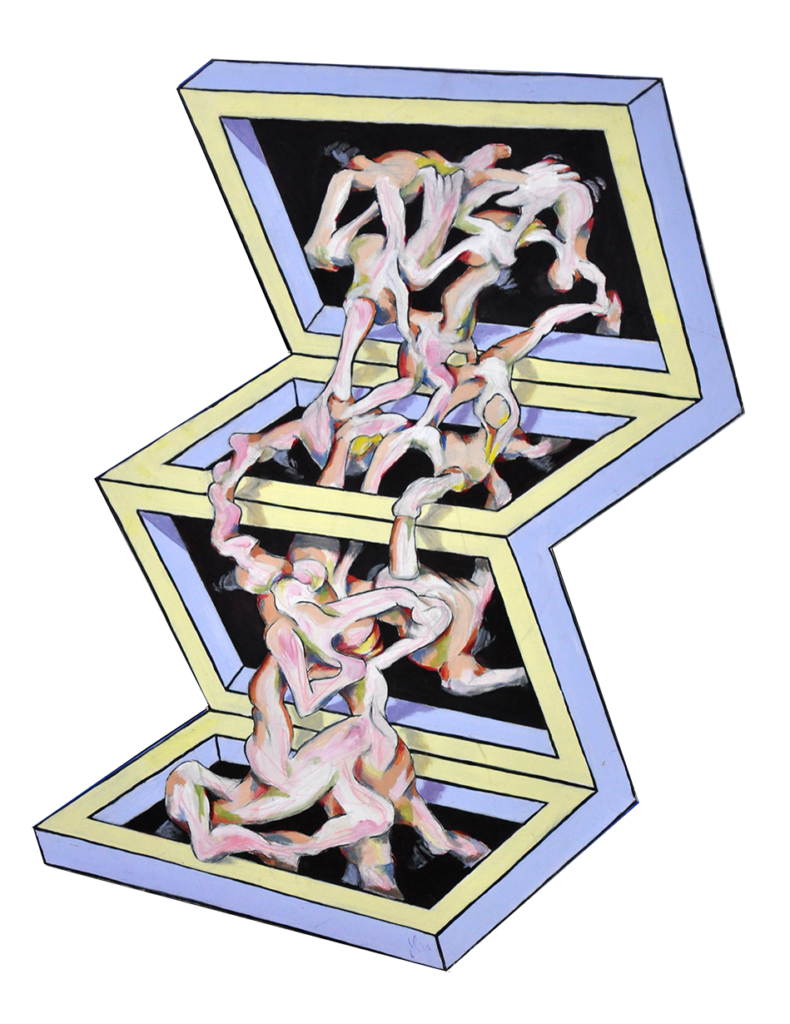
Despite the dawning of eternal life, Christian religious art is more concerned with prohibition and scaremongering than with redemption. Is it ordered from above or is it the artist who prefers tragedy to comedy? Or does the artist use drama to serve the public’s preference for horror, for intense suffering as ironic entertainment to compensate for the mild suffering in everyday life?